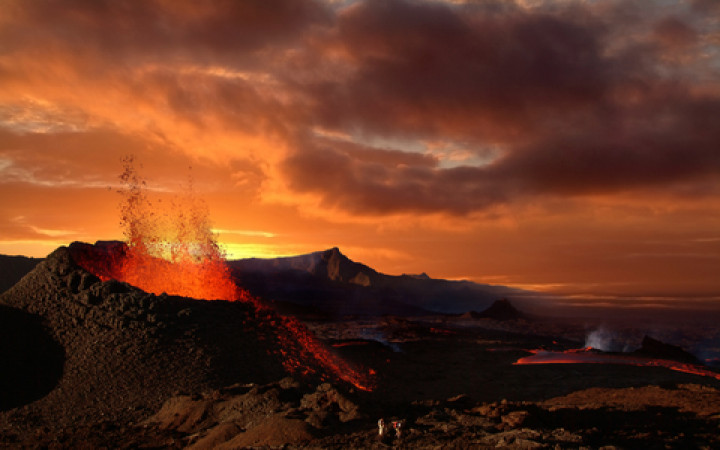Today’s Wonder of the Day was inspired by Ishayu. Ishayu Wonders, “Can doctors replace your iris or your lens in your eye?” Thanks for WONDERing with us, Ishayu!
We hear a lot about what killed the dinosaurs. But what we don’t often ask is . . . what helped dinosaurs come into being? What animals came before dinosaurs, and what happened to them? When dinosaurs died, that was a mass extinction. You probably already know what extinct means. When one kind of animal dies out, and there are no more of them, we call that animal extinct. The dodo bird is one kind of animal that has gone extinct in modern times. When many animals go extinct at the same time, we call that a mass extinction.
The dinosaurs dying out was one mass extinction, and it’s the one we hear the most about. But it wasn’t the only one! Actually, there have been many mass extinctions in the long history of our planet. Today we’re WONDERing about one of those: what was the Permian extinction?
The Permian period was long before the age of dinosaurs—it started almost 300 million years ago. Animals called synapsids lived on the planet. They looked like a mix between reptiles and mammals—some say, like a dog mixed with a lizard! There were also animals that lived in the ocean; there were many kinds of trees and other plants, too. We know that these plants and animals lived on earth at that time because scientists have found their fossils. Depending on where scientists find their fossils, they can tell when the plants and animals lived.
They can also see that at a certain time, many of these animals and plants stopped living. At some points in time, there are fewer fossils because fewer things lived then. These plants and animals died off at about the same time, during the end of the Permian period—around 252 million years ago—and the beginning of the Triassic Period. That’s how we know there was a mass extinction during the Permian period. In fact, the Permian extinction was the worst of all the mass extinctions we know about. Some call it “The Great Dying” because it was so deadly. About 95 percent of sea life died off, and about 70 percent of life on land. That includes both plant life and animals.
But what could have caused it? Most scientists agree that an asteroid crashing into Earth probably caused the mass extinction that killed the dinosaurs. Did that happen during the Permian period, too? Scientists are still trying to find out what caused the Permian extinction. They know that some things changed in the earth’s environment around that time. For one, the ocean water got warmer, and there was less oxygen in the ocean. That made it very hard for most sea animals to live.
Scientists have different ideas on what caused these changes. Some think that, as with the dinosaurs, an asteroid hit the earth. That would have made a lot of dust go up in the air and block light from the sun. Without enough sun, it would get colder. Not enough light and warmth would make most plants die, and then animals would die also.
Another idea is that the ocean currents changed and did not move water around enough. Ocean currents move colder and warmer water around the earth. If ocean currents did not move as much, there would be less oxygen in the water. With less oxygen, many ocean animals would die.
One more idea is that “The Great Dying” was caused by many volcanic eruptions. We know that there were eruptions in an area called the Siberian Traps. These eruptions lasted for thousands of years. Like an asteroid, these volcanic eruptions could have made the earth colder. They could also cause acid rain. Acid rain happens when there is too much of some chemicals in the air. These can cause plants to die. The volcanoes also caused huge fires, which over a long time could put too much carbon dioxide into the air. That could make the planet warmer and make it hard for plants and animals to live.
So, what probably caused the Permian extinction? Scientists have begun to agree that volcanoes are the most likely reason. They are still working to learn more about what happened. What they do know is that the mass extinction actually helped dinosaurs. When the earth’s environment changed, reptiles found it easier to survive. Where most kinds of animals could not live in the new climate, some reptiles could. They replaced the synapsids who came before. These reptiles paved the way for dinosaurs to rule the earth—for a time.
What do YOU think caused the Permian extinction? Do you think it could happen again?
Standards: CCRA.R.1, CCRA.R.3, CCRA.R.8, CCRA.R.9, CCRA.R.10, CCRA.W.3, CCRA.W.4, CCRA.L.1, CCRA.L.2, CCRA.L.3, CCRA.L.4, CCRA.L.5, CCRA.L.6, NGSS.3-LS4-1, NGSS.3-LS4-3, NGSS.3-LS4-4




